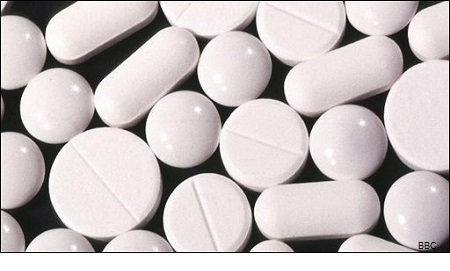
|
|

|
|
| April 20, 2024 |
|
Historic raids: DEA cracks down on 'pill mills' 
The Drug Enforcement Administration and other authorities are raiding pharmacies, pain clinics and other facilities in four states as part of an aggressive crackdown on prescription pain drug abuse, federal law enforcement sources told NBC News.
The morning busts in Arkansas, Alabama, Louisiana and Mississippi are part of a 15-month operation by the DEA drug diversion unit. The sources said 1,000 agents and officers conducted the raids. A federal law enforcement source told NBC News that "Operation Pilluted" is the "single largest pharmaceutical operation in DEA history." It is focused on the illegal sale and distribution of pain killers, including oxycodone and hydrocodone. One of the raids in Little Rock took place at KJ Medical Center, where authorities said they arrested one doctor, four staffers and a security guard. In the last 15 months, 140 people have been arrested, and officers hope as many as 170 others will be arrested Wednesday, according to the sources. The sources said suspects in the operation include doctors and pharmacists. Gov. Robert Bentley of Alabama, himself a physician, described the doctors suspected in the raids as "an embarrassment to the medical profession." "When they choose to overprescribe narcotics to patients, and they know that these patients may be or are abusing them, then they change from being a physician to really being a drug dealer," he said. In Arkansas, federal prosecutor Christopher Thyer described one sting in which undercover officers paid $200 to get prescription drugs from a clinic without ever being examined. He ticked off sobering statistics about prescription drug abuse in his state. Enough hydrocodone is prescribed in Arkansas every year to give 42 pills to every man, woman and child, he said. "This is not a crime problem," Thyer said. "This is truly a public health and community problem." There has been good news in the fight against prescription-drug abuse:Deaths from prescription-drug overdoses declined in 2012 after a decade-long climb, and they have since leveled off. Still, an average of 44 die every day from opioids, including Vicodin, OxyContin and Percocet. How pill abuse touches every corner of the U.S. A record-setting raid of pill mills across the South on Wednesday shows that prescription-drug fraud and abuse remains a stubborn problem that has touched every corner of the U.S., but there have been glimmers of encouraging news. According to the Centers for Disease Control and Prevention, after a decade-long explosion of painkiller overdoses, the country saw its first drop in prescription deaths in 2012, and the numbers have leveled off since then. The dip mirrored a decrease in how often the pills were being prescribed. Still, an average of 44 people die from opioids, which includes medications like Vicodin, OxyContin and Percocet, every day, many of them in the prime of their lives. The highest death rates are among people ages 35 to 54, CDC data shows. Some other facts about the epidemic: • There were 43,982 drug overdose deaths in the United States in 2013, and just over half of them involved prescription drugs. Of those, nearly three-fourths were opioid painkillers. • Nearly 2 million Americans age 12 or older abused or were addicted to opioids in 2013, the CDC estimates. • Experts consider opioids a gateway to other drugs. Nearly one third of people who used an illegal drug for the first time began by misusing prescriptions, the White House Office on National Drug Control Policy reported. • Officials are particularly concerned about the link between painkillers and heroin. However, only 4 percent of people who misuse prescriptions move to heroin, according to the National Institute on Drug Abuse. • Seven out of 10 people who misused prescriptions were given or sold them by a friend or relative. One in five got them from a doctor. Only 5 percent bought them from a drug dealer or stranger, according to the 2009 National Survey on Drug Use and Health. • Painkillers are taking up more and more of law enforcement's resources. In 2009, less than 10 percent of police agencies said they were the biggest drug threat. Four years later, 28 percent did, according to the Drug Enforcement Administration. • The DEA has estimated in the past that misuse of prescription drugs is a $25 billion industry, but that figure predates the current epidemic. Story Date: May 21, 2015
|